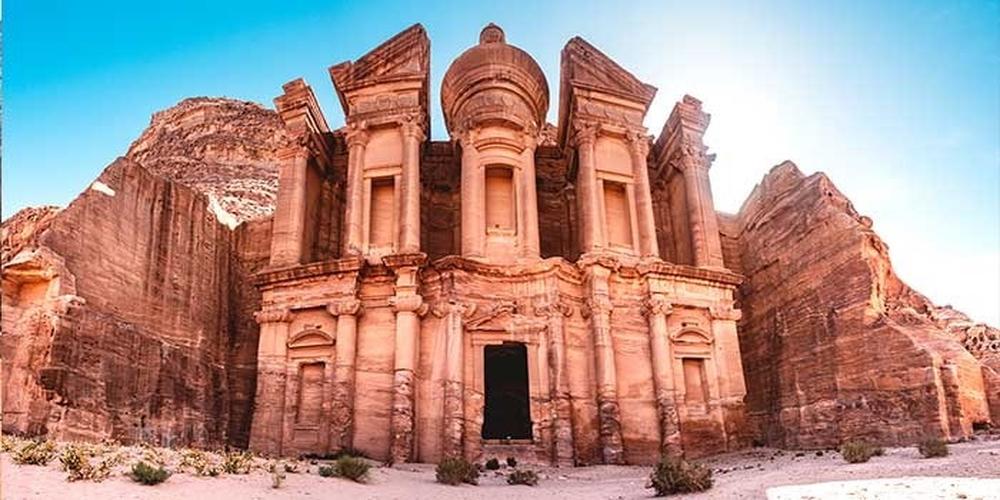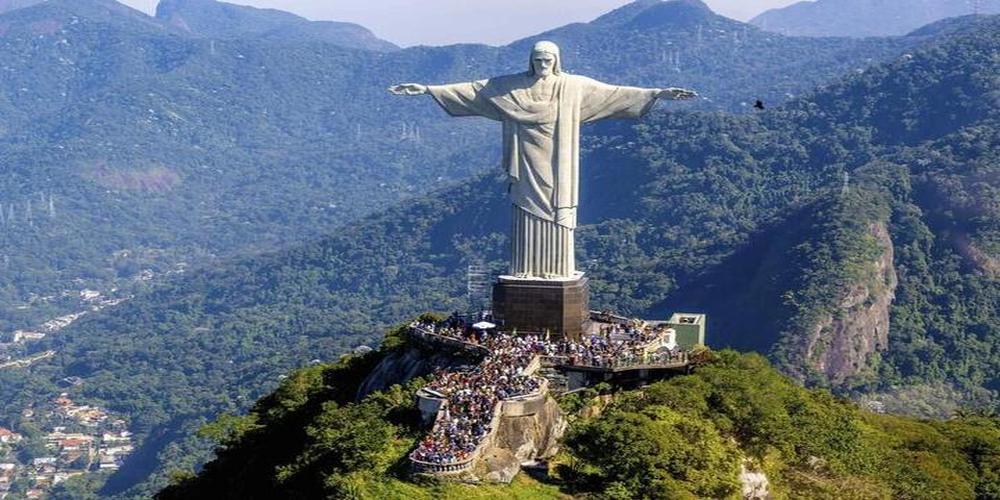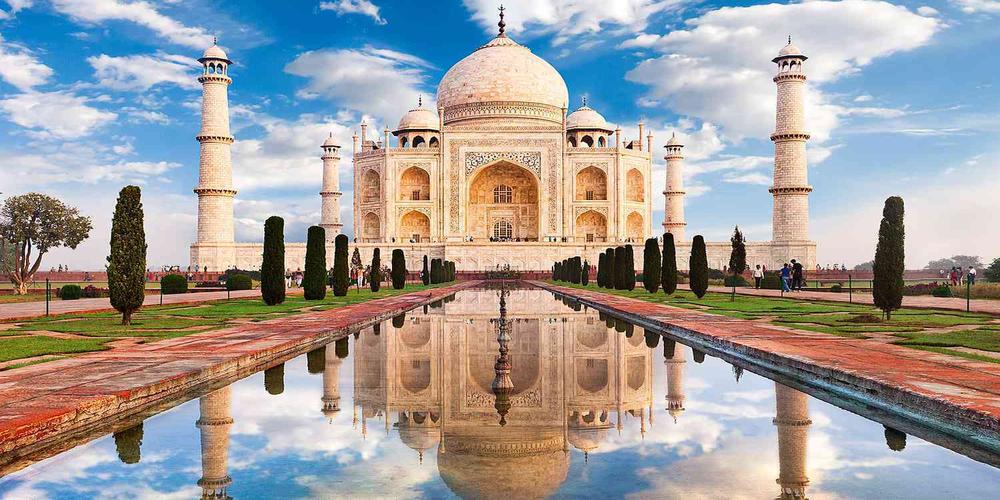Why the Eight Wonders of the World Are a Must-Visit for Travelers
Here are eight reasons travelers should visit the Eight Wonders of the World.

The Eight Wonders of the World are renowned landmarks representing human progress, historical civilizations, and spectacular beauty. Initially, there were seven, but Cambodia's Angkor Wat rose to eighth place, defeating Italy's Pompeii. The wonders are the Great Wall of China, Chichen Itza in Mexico, Petra in Jordan, Machu Picchu in Peru, Christ the Redeemer in Brazil, the Colosseum in Italy, Angkor Wat in Cambodia and the Taj Mahal in India. Visiting these remarkable locations is an unforgettable experience, providing insight into our shared history and culture. Whether you're a history buff, an adventurer, or a fan of natural beauty, these treasures are must-see sites that should be on everyone's bucket list.
1. The Great Wall of China

The Great Wall of China travel, spanning over 13,000 miles across northern China, exemplifies the country's history, resilience, and strategic excellence. It was built in stages by the Qin and Ming Dynasties and comprises two parallel walls interlaced with watchtowers and barracks, demonstrating ancient engineering and military ability. While its success in repelling invasions is debated, many academics feel it had more political than defensive implications. Walking along the Wall provides an immersive experience through China's rich history, with portions such as Mutianyu and Badaling offering well-preserved regions for visitors. Whether ascending steep paths or taking in panoramic views from a cable car, the Great Wall of China is a memorable experience and a must-see for anybody looking to connect with China's historical legacy.
2. Chichen Itza

Chichen Itza, an ancient Mayan metropolis on Mexico's Yucatán Peninsula, existed between the fifth and thirteenth centuries CE and is one of the Best historical landmarks to visit. The city, heavily inspired by the Toltecs, is home to spectacular monuments, the most notable of which is the El Castillo pyramid, or Temple of Kukulkan. This 79-foot pyramid has 365 steps, representing the solar year and demonstrating the Mayans' profound astrological knowledge. During the equinoxes, the setting light throws shadows that resemble a serpent descending the stairway, eventually reaching a stone snake head at the base. Visitors can also tour the Great Ball Court and the Sacred Cenote, making Chichen Itza a fascinating destination for history, architecture, and nature lovers alike.
3. Petra

Petra, sometimes known as the "Rose City" because of its magnificent pink sandstone cliffs, is an iconic ancient site in Jordan's southwestern desert. Petra was once a central Silk Road trading hub, carved into the rock by the ancient Nabataeans in the fifth century BC. Visitors enter the tight Al Siq canyon and are welcomed by stunning rocks before emerging into the open air to view the spectacular Treasury (Al-Khazneh), a masterwork of detailed carvings. Petra, hidden for generations, was unearthed in the nineteenth century. It remains a tribute to the Nabataeans' brilliance and history, providing visitors with a memorable experience as they explore its tombs, temples, and spectacular architecture.
4. Machu Picchu

The Historic Sanctuary of Machu Picchu, located high in the Peruvian Andes, is a remarkable testimony to the Inca civilization's art, architecture, and engineering. The Incan Empire built this old castle between 1450 and 1460, and it was abandoned a century later during the Spanish Conquest. However, its actual significance has only grown over the years. Machu Picchu, often misunderstood as the "Lost City of the Incas" (a title better suited to Vilcabamba), is nonetheless an iconic monument of Inca genius. Travelers may get to the site by hiking the Inca Trail, traveling through lush forests and ancient ruins before arriving to see the awe-inspiring stone temples, terraces, and the mystical Intihuatana Stone, all set against beautiful vistas of the surrounding mountains and the Urubamba River.
5. Christ the Redeemer

Christ the Redeemer, one of the world's most recognizable sights, sits majestically on Mount Corcovado in Rio de Janeiro, Brazil. This towering 130-foot monument of Jesus Christ, conceived by artist Paul Landowski and built by engineer Heitor da Silva Costa, is an iconic symbol of spirituality and provides stunning city vistas. The statue, built in the Art Deco style of reinforced concrete and soapstone, weighs 635 tons and was created between 1922 and 1931. Reaching the peak by cog train or trek adds to the challenge, rewarding visitors with breathtaking views of Rio, including Sugarloaf Mountain and the famous beaches of Copacabana and Ipanema. Christ the Redeemer is a must-see destination for spiritual meditation and experiencing Rio's beauty.
6. The Colosseum

A journey to Rome is complete with seeing the Colosseum, the magnificent amphitheater that once hosted gladiatorial battles, public executions, and spectacular exhibitions. The Colosseum, built between A.D. 70 and 72 by Emperor Vespasian, is a magnificent monument of the Roman Empire's grandeur. Despite losing two-thirds of its original structure, it remains a World Wonder and a popular tourist site. As you stroll within its old walls, you can practically hear ancient Romans cheering on gladiators as they combat fearsome wild beasts. Surrounded by other prominent buildings, such as the Roman Forum and Palatine Hill, the Colosseum provides a detailed look at ancient Rome's history and daily life.
7. Taj Mahal

The Taj Mahal is a stunning marble mausoleum in Agra, India. Shah Jahan built the Taj Mahal between 1632 and 1653 in memory of his beloved empress Mumtaz Mahal. Its beautiful gardens, dazzling lakes, and elaborate carvings add to the monument's beauty, while the perfectly proportioned building's reflection in the water heightens its mystical charm. Over 20,000 artists worked on this masterwork, creating an everlasting emblem of undying love and artistic excellence. For many tourists, visiting the Taj Mahal is a dream come true, creating a lasting sense of tranquil beauty.
8. Angkor Wat

Angkor Wat Cambodia, located in the center of Cambodia, is the world's most prominent religious monument and an architectural marvel from the 12th century. Angkor Wat, first dedicated to the Hindu god Vishnu before becoming a Buddhist temple, represents Cambodia's cultural past. It was added to the UNESCO World Heritage Sites list in 1992, recognizing its immense global significance. Visitors are fascinated by the elaborate carvings illustrating old Hindu mythology, the majestic towers, and the expansive courtyards. Angkor Wat, also known as Yasodharapura, attracts millions of tourists yearly, and many want the incomparable experience of witnessing the sunrise over the temple, which is reflected in the surrounding moat.
Conclusion
The Eight Wonders of the World offer transformative experiences every visitor should have at least once. From the magnificent views of the Great Wall of China to the tranquil beauty of the Taj Mahal India, each wonder provides a distinct blend of ancient history, cultural marvels, and incomparable natural beauty. These renowned landmarks enable visitors to connect with history, admire human creativity, and immerse themselves in a rich cultural heritage. Whether exploring the ruins of Petra, hiking the Andes, or marveling at Angkor Wat Cambodia, visiting these treasures guarantees unforgettable memories and the adventure of a lifetime.









Comments
No comments yet. Be the first to comment!